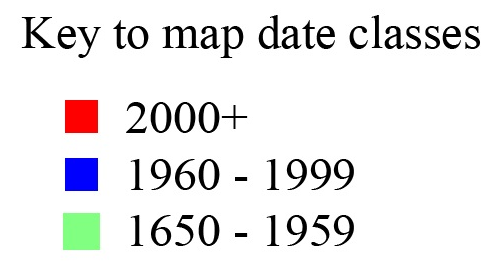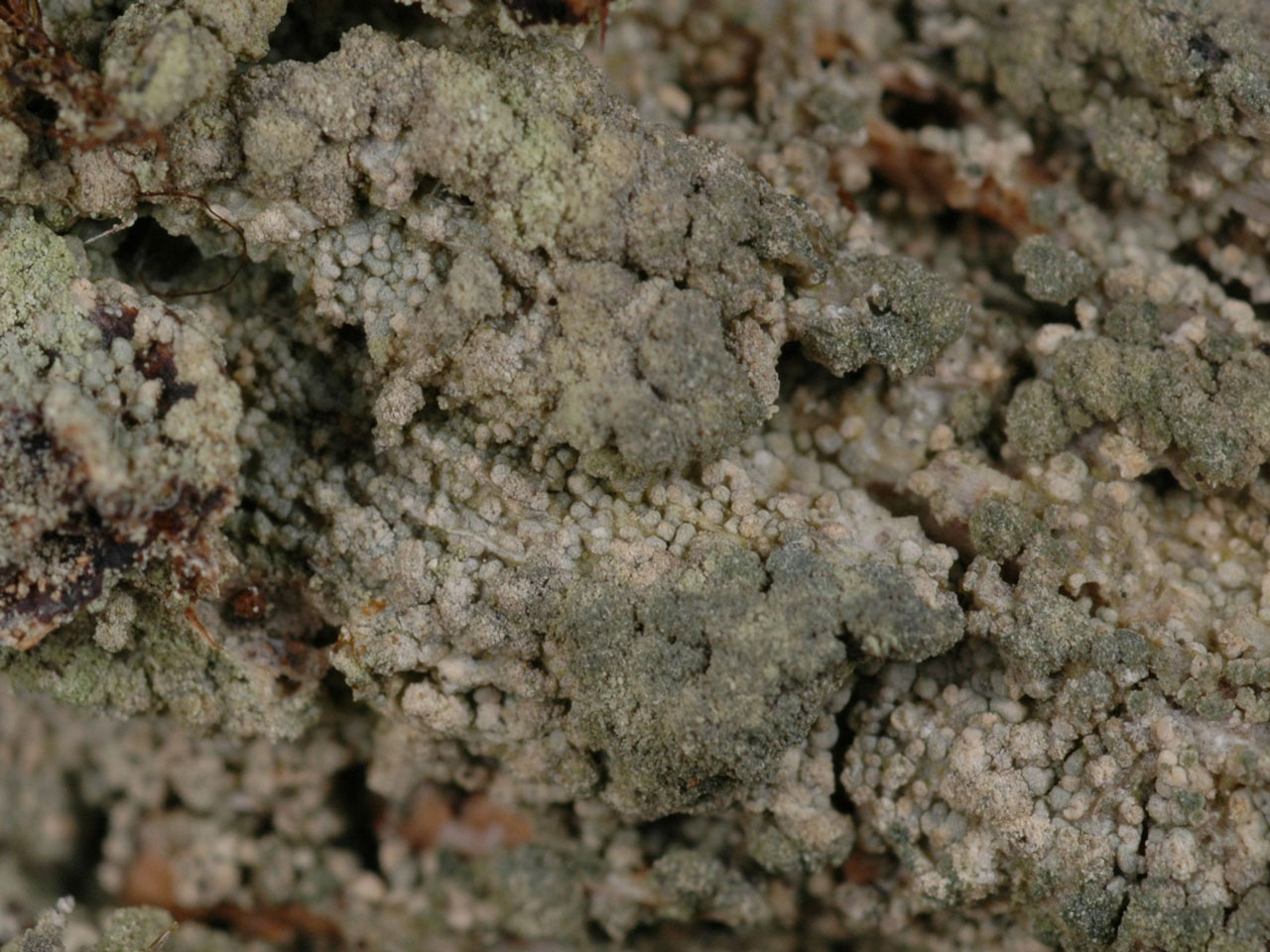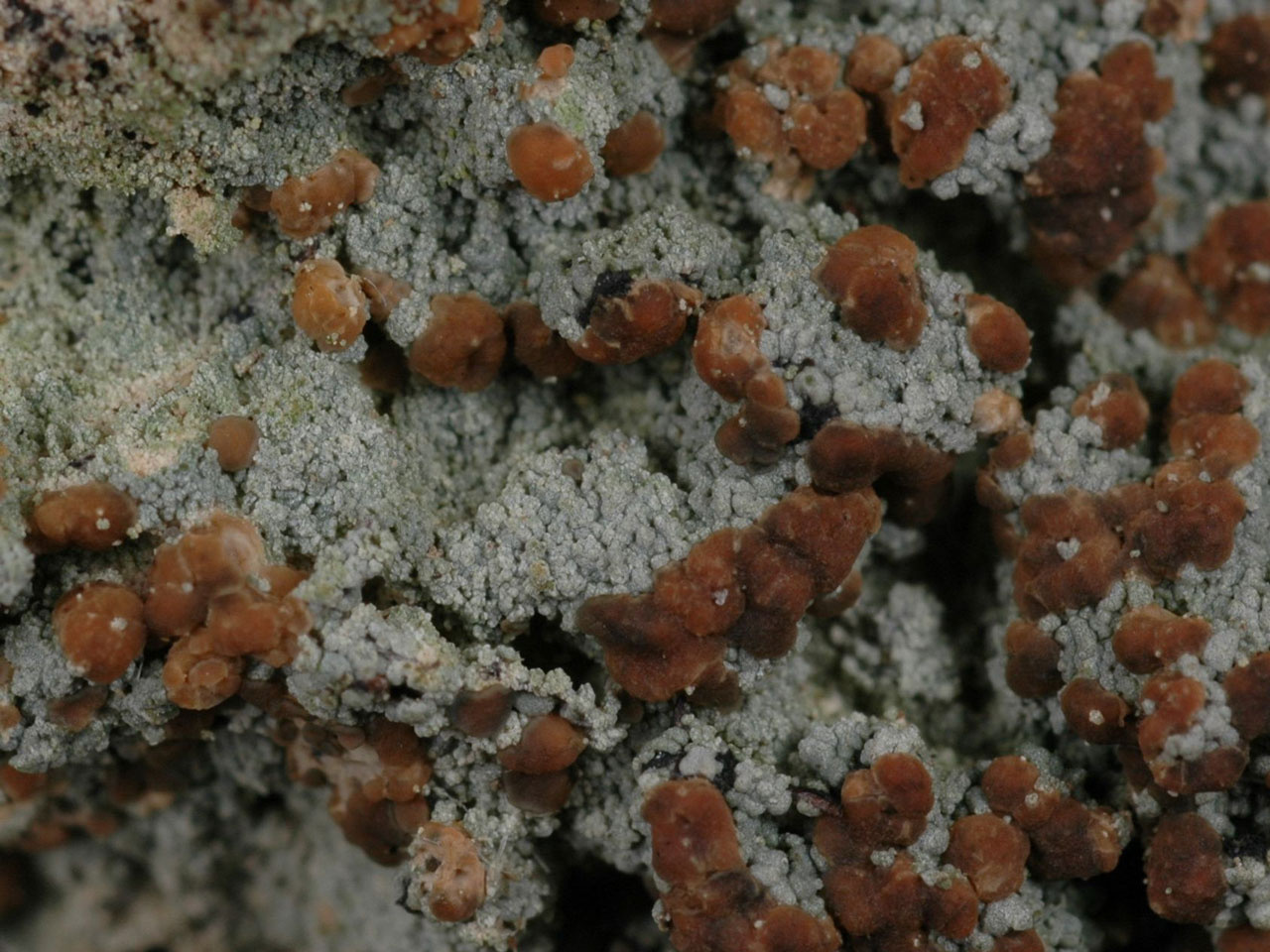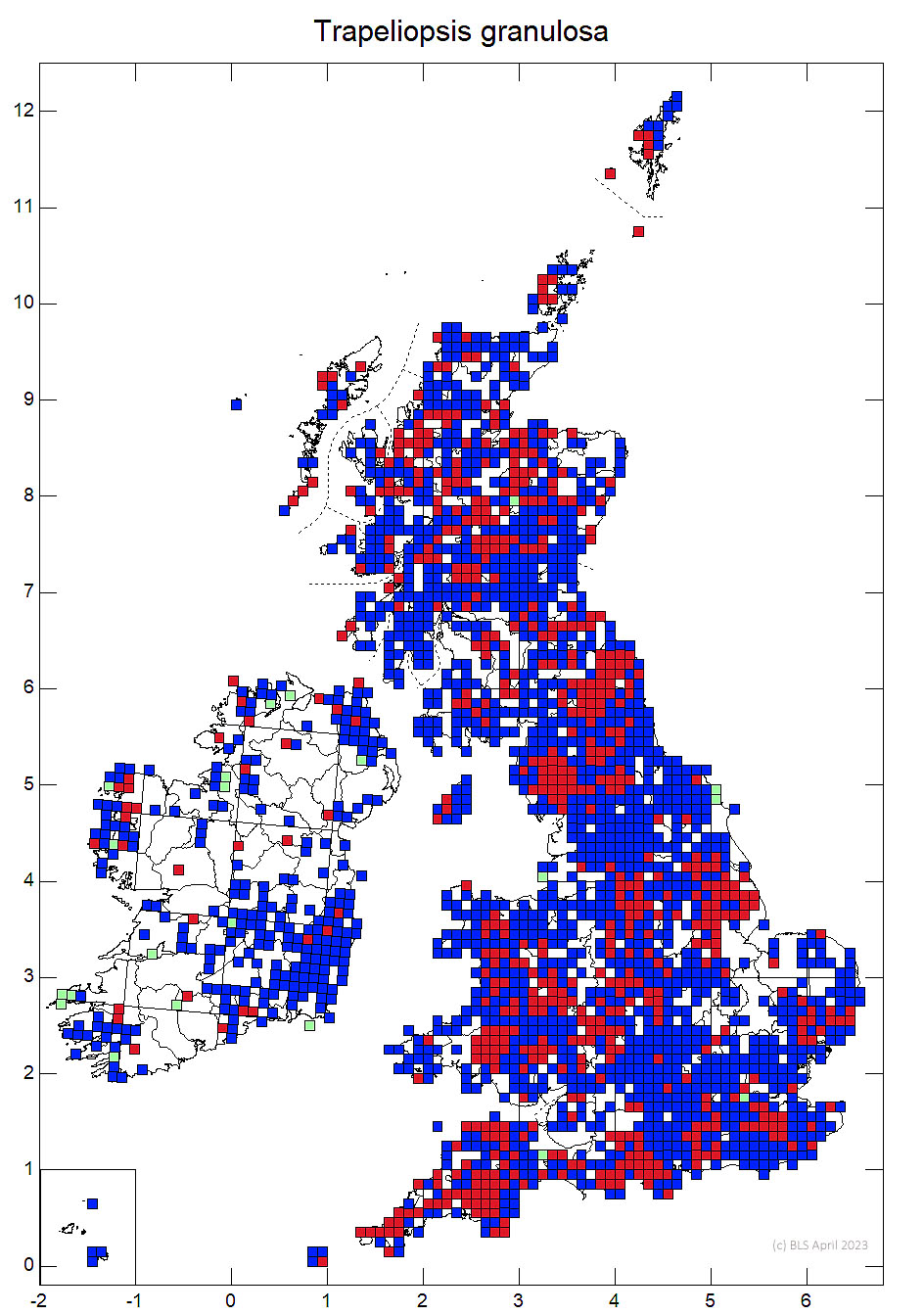Trapeliopsis granulosa
Lecidea quadricolor
A common C+ red sorediate crust found on acid substrates with a white to pale grey thallus with whitish to cream-yellow soralia, sometimes tinged grey-green. Found widely on humus in heathland and moorland and on dry lignum. Replaced by the similar Trapeliopsis flexuosa in damper habitats. The latter has typically ± aeruginose soralia but also has other more subtile differences in the thallus.
Thallus in small patches or coalescing to form more extensive patches, usually white to pale grey, sometimes in part pink, more rarely green-grey; of crowded granular to verrucose areoles, 0.12–0.5 mm diam., effigurate and less often flattened when scattered or at the edge of the thallus; soralia 0.3–0.6 mm diam., irregular and granular, whitish to cream-yellow, sometimes tinged grey-green, sometimes very few or absent. Apothecia rare, but frequent when present, 0.3–1 (–1.5) mm diam., at first flat but often becoming convex and the exciple ± excluded, occasionally tuberculose and to 1.7 mm diam., very variable in colour, pale pink to reddish brown or pale to dark green-grey, very often a piebald mixture of these hues; hymenium 70–80 µm tall; epithecium pale to greenish. Ascospores 9–14 × 4–6 µm, a few occasionally becoming 1-septate. Thallus C+ red, K–, KC+ red, Pd–, UV+ whitish (gyrophoric acid).
Resembles Trapeliopsis flexuosa which has smaller ascospores, however, both species are normally sterile in which case, T. flexuosa can be separated by colour differences (± aeruginose) along with smaller areoles (80–250 µm diam) with with scattered marginal areoles to 0.4 mm diam. and being found in damper habitats. Trapeliopsis granulosa has areoles 120–500 µm diam., without scattered marginal areoles. More data are required, but according to Resl et al. (2015) the species may be polyphyletic, and a sequence from T. pseudogranulosa clustered within the complex.
Usually on acid soils, moribund bryophytes or plant debris, but avoiding shaded habitats, and on dry well-lit wood, more rarely on acid rocks. A primary coloniser of recently burnt heathland, often with Placynthiella icmalea.

Common, throughout Britain and Ireland but over recorded in the past
Orange, A., Cannon, P., Aptroot, A., Coppins, B., Sanderson, N. & Simkin, J. (2021). Baeomycetales: Trapeliaceae, including the genera Coppinsia, Placopsis, Placynthiella, Rimularia, Trapelia and Trapeliopsis. Revisions of British and Irish Lichens 18: 1-19.
Resl, P., Schneider, K., Westberg, M., Printzen, C., Palice, Z., Thor, G., Fryday, A., Mayrhofer, H. & Spribille, T. (2015). Diagnostics for a troubled backbone: testing topological hypotheses of trapelioid lichenized fungi in a large-scale phylogeny of Ostropomycetidae (Lecanoromycetes). Fungal Diversity 73: 239–258.
Text by Neil A Sanderson based on Canon et al (2021).


